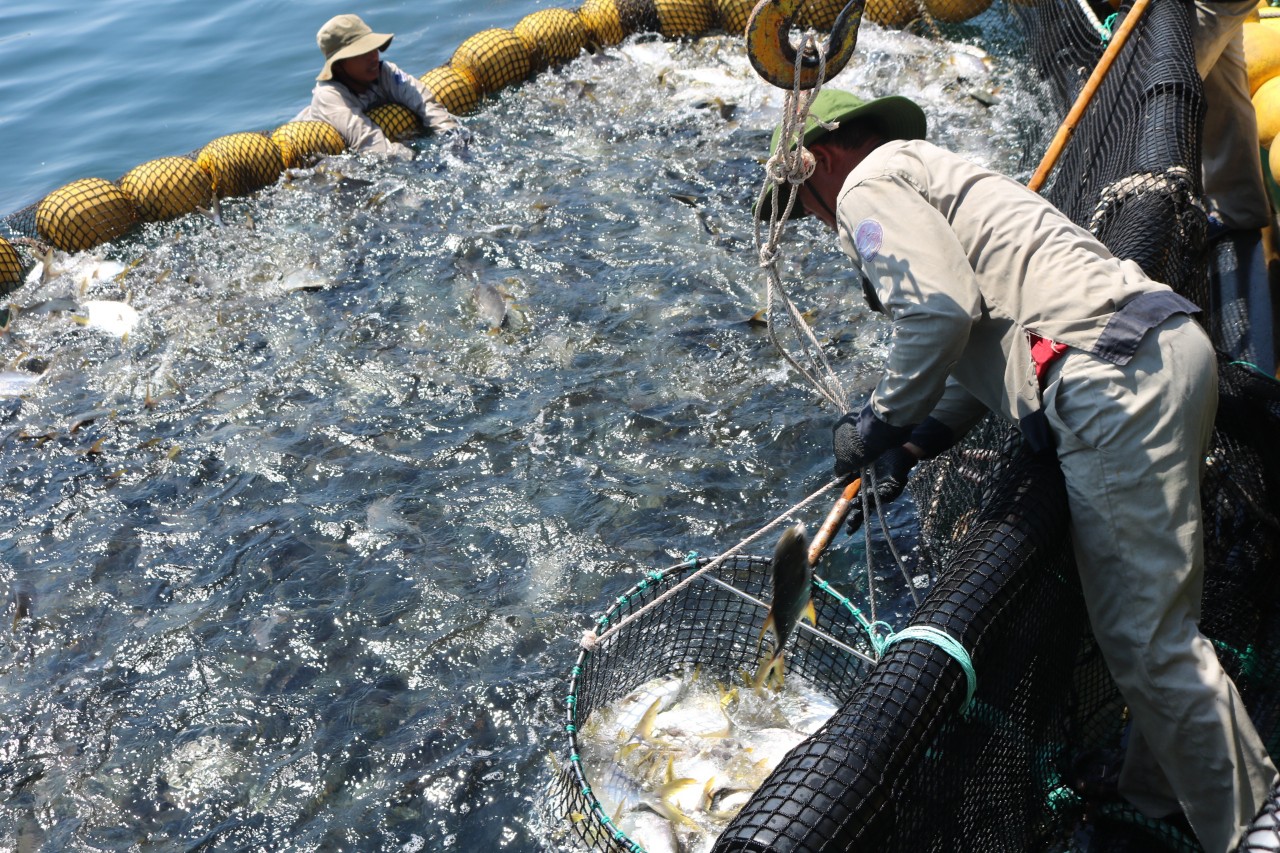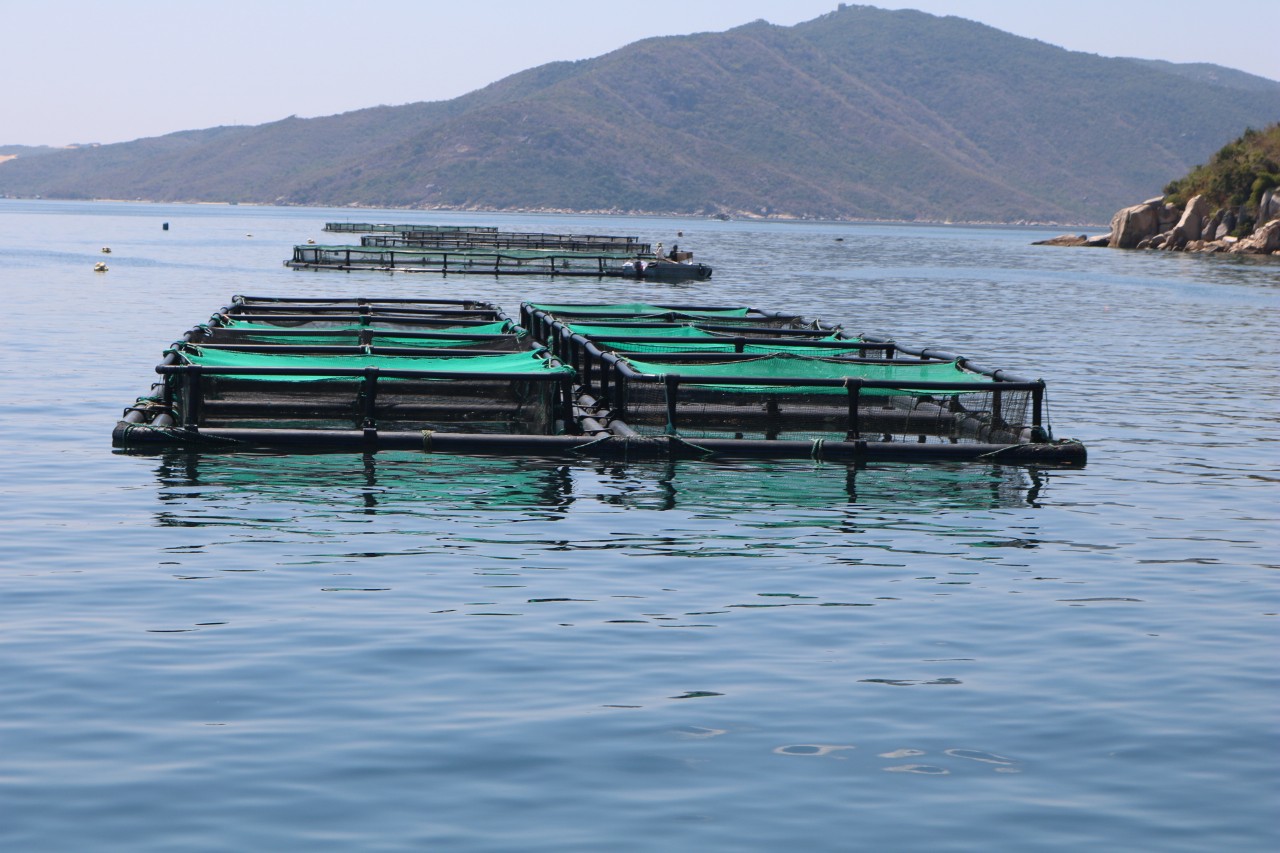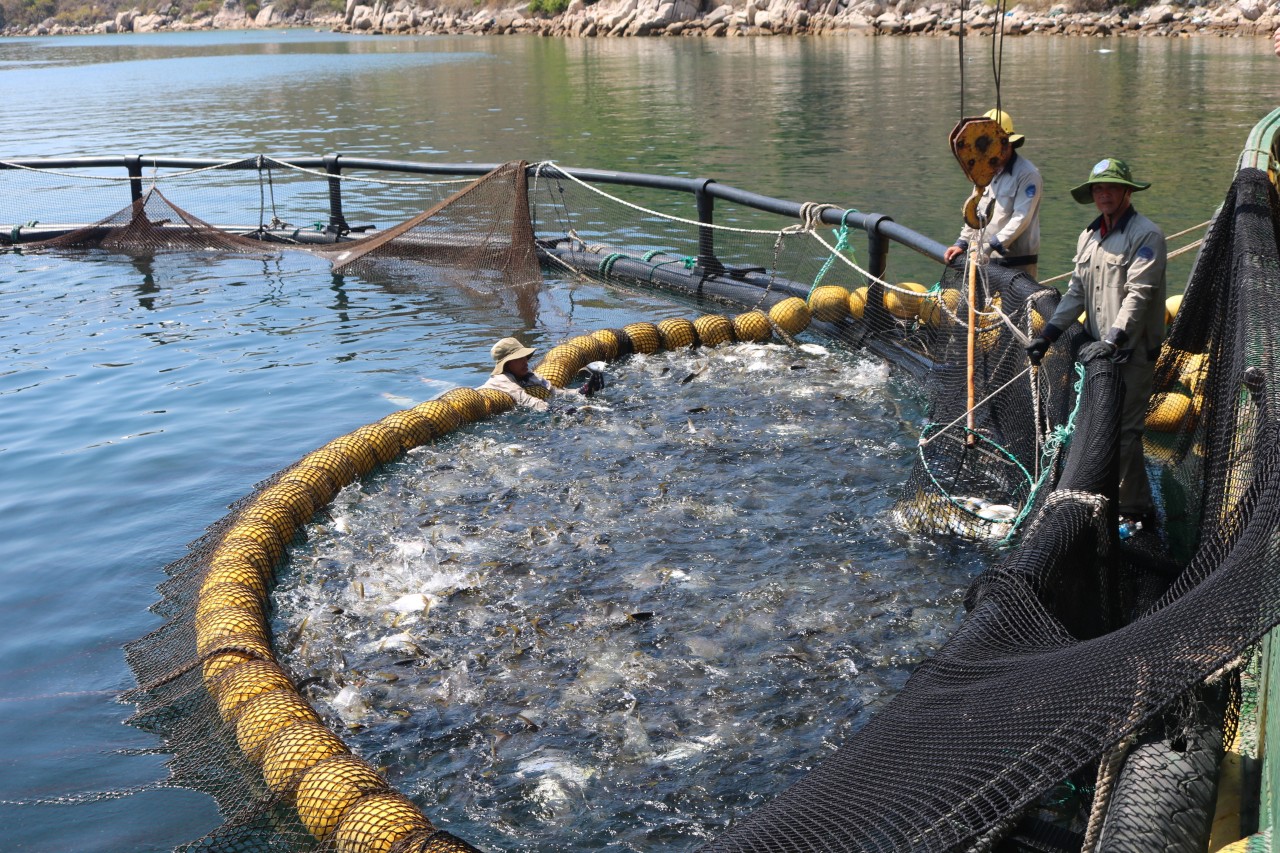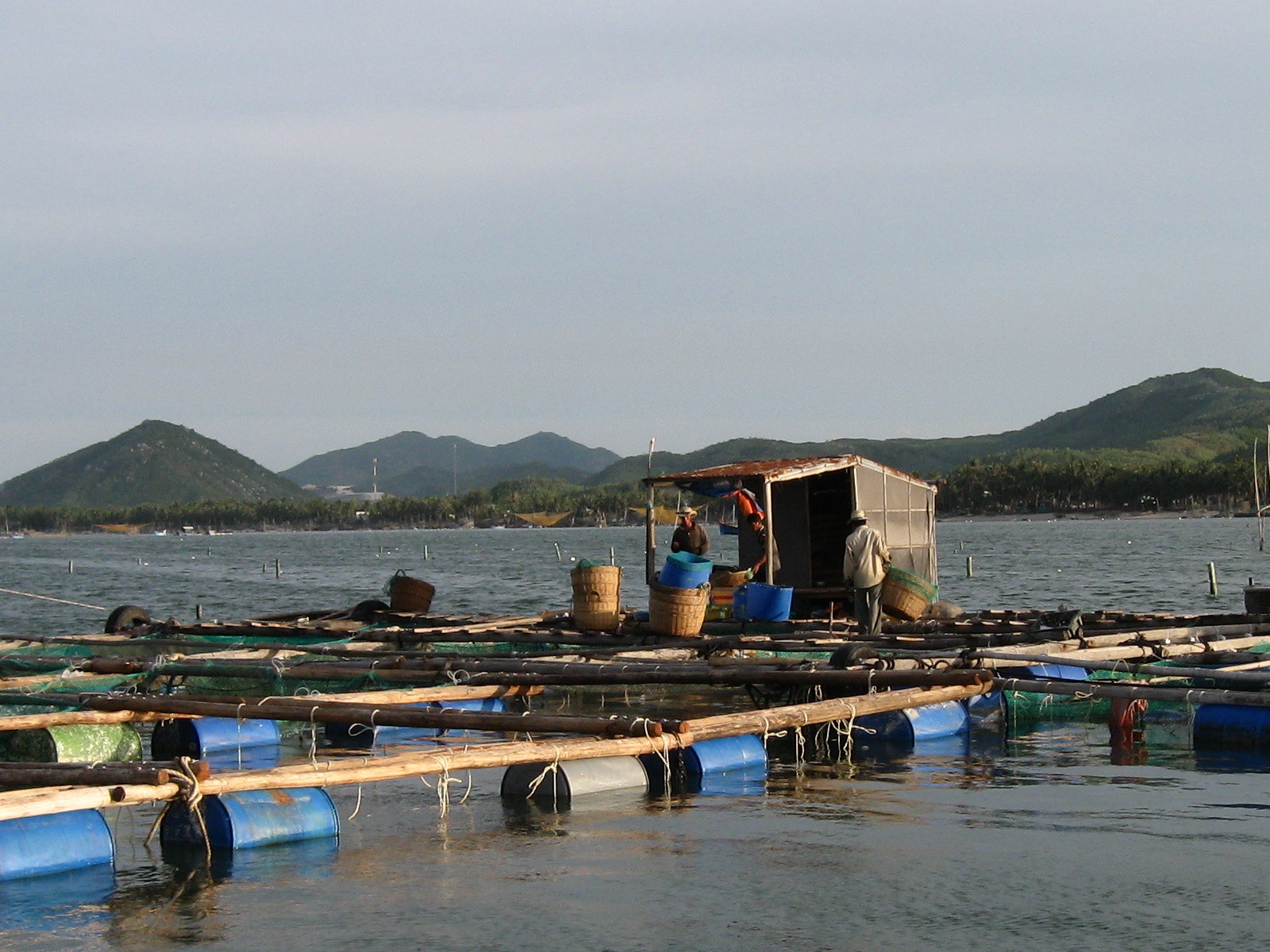November 26, 2025 | 12:14 GMT +7
November 26, 2025 | 12:14 GMT +7
Hotline: 0913.378.918
November 26, 2025 | 12:14 GMT +7
Hotline: 0913.378.918

Industrial marine farming will result in an increase in output, thus requiring solutions to secure production. Photo: V.D.T.
According to Tran Cong Khoi, Deputy Director of Department of Aquaculture (Directorate of Fisheries), when the industry makes the change from traditional marine farming to industrial form, businesses and farmers need to adapt new farming technologies, replacing old wooden cages with HDPE cages. Predicting that the production costs will spike, the functional force has immediately come up with solutions to stabilize production while taking into account the consumption route to avoid the "rescue phenomenon" when output experiences a sharp increase.h
The fisheries sector will operate a system of environmental monitoring, warning and proactive disease prevention; invest and apply the achievements of the fourth industrial revolution to management and production in concentrated marine farming areas; limit risks, adapt to climate change, and ensure sustainable production development. At the same time, local authorities will organize environmental impact assessment and environmental carrying capacity, establish linkage and cooperate with other stakeholders to relocate people and rafts to ensure safety and minimize potential damage at sea.

To develop industrial marine farming, it is essential to assess the environmental impact and environmental carrying capacity of farming areas. Photo: V.D.T.
“Normally before storms, fishermen who farm using traditional cages worry about harvesting young fish and shrimp, selling them off to get as much money as they can in fear of being left empty-handed when the waves sweep away the cages. This is not a problem high-tech marine farming units using HDPE cages because risks are controlled and they can be proactive in the face of the most unfavorable weather. For example, fishermen who harvested young fish could only make VND 90,000 per kg of fish. If industrial farming methods can effectively suppress the damage from the storms, after the Lunar New Year, the high-tech marine farming units can sell their products for VND 150,000/kg," said Pham Duc Phuong, technical expert at the Research Institute for Aquaculture I (RIA1).
Industrial marine farming looks promising. On average, a farm of 1 ha can harvest 100 tons of fish. However, from farmers’ perspective, output is a major concern.

Cages made of HDPE material are currently the most effective tool for the industrial marine farming model. Photo: V.D.T.
Hoang Ngoc Binh, Director of Operations, Australis Aquaculture Vietnam Ltd. could not hide his worries. "Industrial marine farming can indeed increase output, but we don't know who to sell the products to. Fishermen cannot carry their bags abroad to find partners or participate in seafood fairs to promote their products. Regarding the issue of consumption, the industry and trade sector need to step in and guide farmers. The agricultural sector and local authorities must also get involved in planning and setting consumption directions”.
The Government has issued Decision No. 1408/QD-TTg dated August 16, 2020 of the Prime Minister approving the Scheme to develop the seafood processing industry for the period 2021-2030, aiming to promote trade while at the same time integrating trade promotion activities for fresh and processed marine products into the trade promotion master plan, thereby expanding Vietnam’s common seafood product consumption market. The fisheries industry orients to further participate in international cooperation to promote trade and introduce Vietnamese marine products to markets in the region and the world in general.

In the process of developing industrial marine farming, localities need to choose appropriate models. It can be either fish farming, seaweed farming, or abalone farming combined with tourism. Photo: V.D.T.
From the viewpoint of Dr. Vo Si Tuan, Vice President of Vietnam Seaculture Association, improving product quality is also a way to open up more routes for output. “Previously, businesses specializing in the production and processing of carrageenan powder from red seaweed in Vietnam used domestically raised seaweed as raw materials, however, now most businesses import seaweed from abroad. The reason is that the agar content in Vietnamese seaweed has decreased dozens of times compared to 10 - 20 years ago, from 60 - 70% to 20% due to the degradation of seaweed. The same goes for marine farming at present. Product quality must be guaranteed in order to have a solid output”.
Translated by Samuel Pham

(VAN) The model of making a living under the forest canopy through the agroforestry system in Van Son commune, Bac Ninh province, is expected to generate an annual income of approximately VND 30 million/ha.

(VAN) Many enterprises in Can Tho are harnessing natural energy and reducing greenhouse gas emissions in their production processes, thereby contributing to the promotion of a sustainable green transition.
/2025/11/24/3536-2-112800_176.jpg)
(VAN) Dong Nai now has tens of thousands of hectares of forests certified for sustainable management, and this area will continue to be expanded in the coming period.

(VAN) Vinh Ha hamlet (Dai Xuyen commune, Hanoi) is shifting away from small-scale farming as households adopt bioscurity into their breeder chicken models.

(VAN) Heavy rains make aquatic species more vulnerable to disease. Proactive water management and high-tech systems help farmers prevent outbreaks and protect yields.

(VAN) Greenhouses are shifting production mindsets in Binh Lu commune, enabling farmers to ‘weather the sun and rain’ and secure stable vegetable harvests throughout the year.

(VAN) Green transition is crucial for the Mekong Delta amid climate change and stricter standards, offering a path toward sustainability.